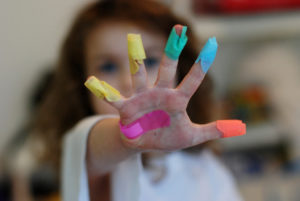“Never Let ’em See You Bleed”: Lessons From An Alligator– Part III – The Finale

This post was originally posted on my Linked In page 5/30/16.
https://www.linkedin.com/pulse/article/never-let-em-see-you-bleed-lessons-from-alligator-part-lisa-heintz/
PART III
Will they see her bleed?
This final installment of “Lessons from an Alligator” picks up at the point where I am on the brink of a profound, life-changing epiphany involving a runaway alligator and a crowd of terrified zoo visitors. Stick with me, folks–I promise there is an important message in all of this!
I managed to salvage the situation reasonably well, though never to my own satisfaction. I learned a lesson about teaching that day that transferred far beyond Arthur and his unpredictable zoo mates. I understood that it is important to allow students to see us as learners ourselves; to see our own vulnerability, our fears, our confidence, our mistakes and our successes. We create comfortable relationships with others when we allow ourselves to be seen “scutes and all.” Strong, trusting relationships are required for learning to happen. So why the mantra “Never let ‘em see you bleed?” Isn’t that the opposite of allowing ourselves to be seen as flawed?
I think the value in the quotation is in reminding ourselves that as teachers we are not always actively teaching, but we are always modeling. For better or worse, it is not so much the errors that we make that matter, but how we handle them. Had I run crying from the Demonstration with Arthur’s tail whipping me down the path I would have instilled a clear sense of panic and fear in those who were watching the situation unfold. They would certainly have had an exciting “tail” to tell their friends, but they would also have left with a sense of fear about Arthur, alligators, and perhaps even “wild things” in general. All the knowledge we had imparted would have been for naught because it was the emotion of the situation that was embedded in their experience.
What on earth does all this have to do with using music in the classroom, you ask? Everything. Too many teachers consider themselves “poor singers” thus, they don’t make an effort to incorporate singing or music into their curriculum. They recall all too painfully being told they (or their parent, sibling, friend) “can’t carry a tune in a bucket” or asked to sing “Far, Far Away,” as the old joke goes. Those are all emotionally charged memories embedded in our minds that do not reflect reality.
The reality is this: Children love to sing! At a very young age their sense of what “sounds good” is not even truly developed yet, so they don’t realize if you sound like Kermit the Frog or Andrea Bocelli. More importantly, they don’t care! They want to be engaged in musical experiences, whether through singing, listening, creating or all three, and they need you to provide those experiences for them! In the very same way you would encourage your students’ early reading skills, building up their confidence, celebrating their mistakes (because that means they’re learning!) and their successes, they need that when it comes to music, too. And so do you!
Arthur’s real lesson is that allowing yourself to model vulnerable learning–including musical experiences–engages children in the emotion of learning, not just the information of learning. And we all know that once emotions are engaged learning becomes more fun, expedient, and memorable. But if you allow yourself to be seen “bleeding”–showing your fear by avoiding something new because it is too challenging, unfamiliar, or uncomfortable (if not singing, perhaps the dreaded essay writing or algebra, or ____ -choose your own fear) you model that avoidance of challenge is expected, okay–even acceptable. You also model that “product” (having what someone else considers a “good” singing voice or natural talent) is more important or better than the process of learning, which I suspect is the very opposite of what you really believe. And you already know what Arthur would think of that!
In closing, the following song is dedicated to all the shower-divas, car-tune karaoke artists, hum-alongers, toe-tappers and outright singers. Let your new mantra be:
“Never let ‘em see you cringe…Just sing!”

 For those of you over 40, you might recall the Sesame Street song by Joe Raposo (also covered by The Carpenters), “Sing!” Book illustrated by Tom Lichtenheld https://www.youtube.com/watch?v=vW_PU7WwCAc
For those of you over 40, you might recall the Sesame Street song by Joe Raposo (also covered by The Carpenters), “Sing!” Book illustrated by Tom Lichtenheld https://www.youtube.com/watch?v=vW_PU7WwCAc
Or for a similar message with a modern beat by the fabulous a capella group Pentatonix:
 “Sing!” https://www.youtube.com/watch?v=Yc7-krRX8uA
“Sing!” https://www.youtube.com/watch?v=Yc7-krRX8uA
Sound Off: Are there subjects, skills or activities you avoid because you are afraid or lack confidence?
If not, how do you help students gain confidence to tackle those things that seem “too hard” to them?
If so, how can you embrace your fear and turn that into a teachable moment for your students’ and your own growth?

 I'm Lisa Heintz, a 30-year veteran of teaching at the pre-K, elementary, high-school and professional-development levels.
I'm Lisa Heintz, a 30-year veteran of teaching at the pre-K, elementary, high-school and professional-development levels.



